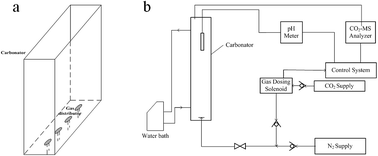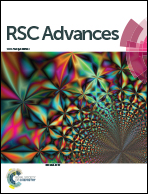Utilisation of tris(hydroxymethyl)aminomethane as a gas carrier in microalgal cultivation to enhance CO2 utilisation and biomass production†
Abstract
CO2 supplementation is usually a limiting factor in microalgal culture systems, especially when flue gases are used as the carbon source. In this study, tris(hydroxymethyl)aminomethane (THAM) was applied as a gas carrier to increase CO2 storage capacity in the culture medium and enhance microalgal biomass production. Abiotic experiments showed that the amount of CO2 absorbed by the medium within the same absorption time increased with increasing THAM concentration, and the gas absorptivity maintained a higher level (>60%) under the neutral pH conditions. Cell growth in shaker flasks illustrated that the biomass productivities of Scenedesmus dimorphus were significantly improved (31 to 66%) when the medium contained 2–8 mmol L−1 THAM. Meanwhile, THAM was not biodegraded during the cultivation. The biomass productivities achieved with 6 mmol L−1 THAM were much higher (32 to 33%) than that with routine culture when it was applied into an open raceway reactor system (2 m2), and the CO2 utilisation efficiency also increased by 6 to 12%. The results show that the addition of THAM as a gas carrier for enhancing CO2 input could be an easy-to-use and cost-effective approach for mass cultivation of microalgae.


 Please wait while we load your content...
Please wait while we load your content...